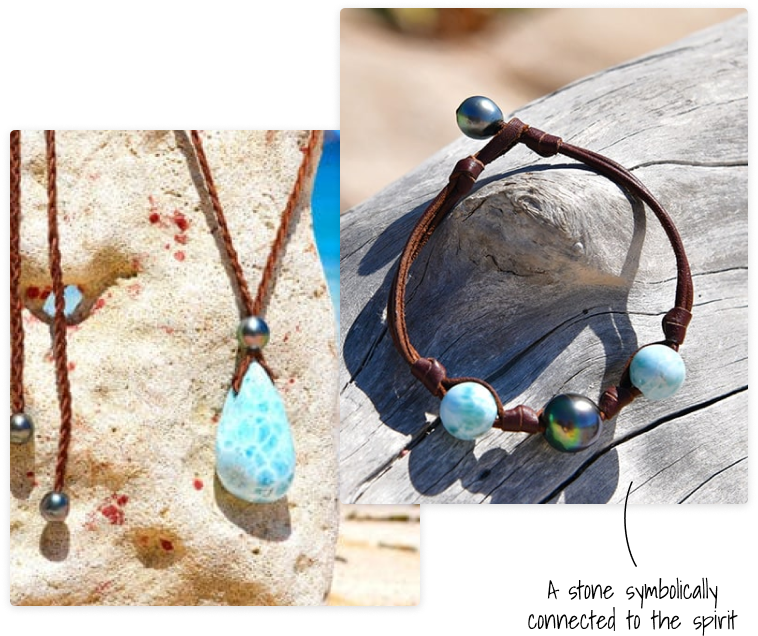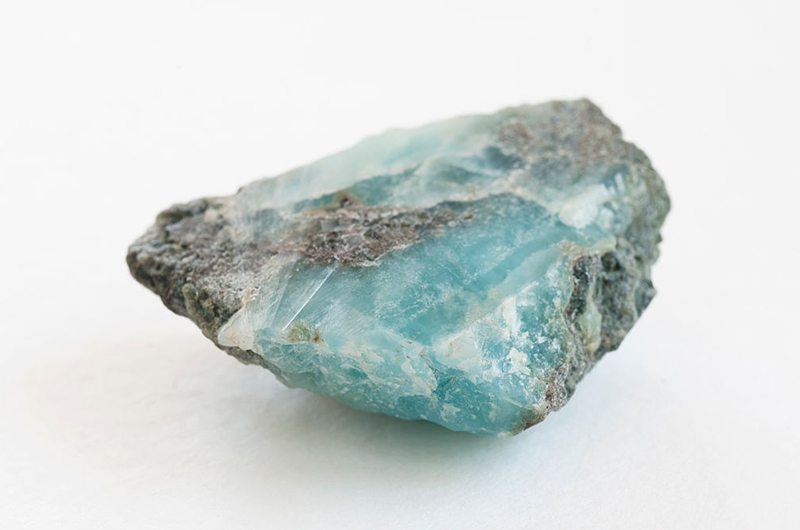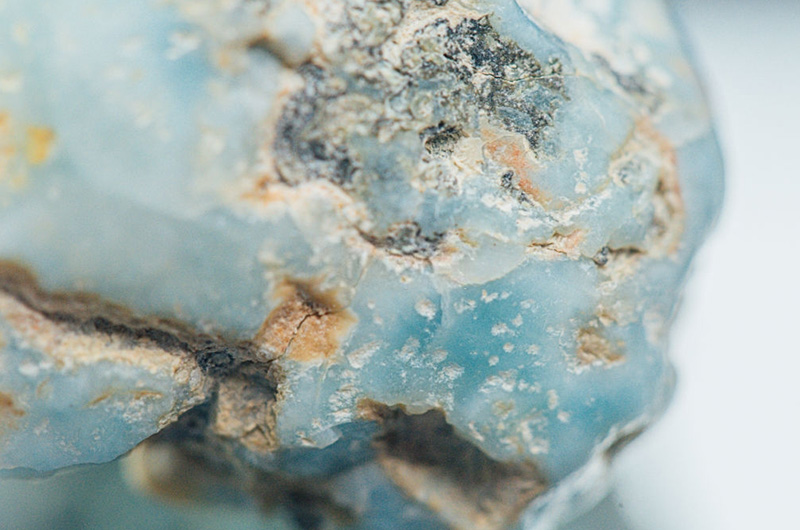The History of Larimar 
The exploitation of Larimar stone is relatively recent, beginning in 1976. As early as 1916, Miguel Domingo Fuertes de Loren, a priest officiating in Barahona, a village in the Dominican province of the same name, requested permission from the Republic's ministry to explore and mine a certain blue rock he had discovered.
Since the deposit was completely unknown to the government, he was not granted this right, and the official discovery of this remarkable stone did not occur. It was not until 1974—several decades later—that a fortuitous discovery was made by two men from the village of Los Chupaderos, also located on the island of Hispaniola.
Noticing an exceptional blue color reflecting off the beach near the “Bahoruco” river, they followed the water's path upstream and eventually found the rocky source of this striking display, uncovering the Larimar deposit. Among these curious explorers was Miguel Mendez, who gave the stone its official trade name, “Lari-mar,” as explained earlier. Mining operations began two years later after this re-discovery.
Another Myth Surrounding Larimar 
Referring to Plato and his account of the legend of Atlantis, the idyllic world and, thus, the stone of the Atlanteans, would be closer to the Mediterranean coast. And yet… according to some archaeological hypotheses, the lost civilization might realistically be located near the island of Santo Domingo. Therefore, it is said that Larimar could indeed be the
stone of the Atlanteans...
- Mineral Group: Larimar is a type of pectolite, from the silicate quartz family.
- Chemical Composition: Its formula, NaCa2(OH/Si3O8), is composed of hydrated sodium and calcium silicate.
- Crystal System: Triclinic, a reticular system involving only 7% of minerals.
- Hardness: Ranges from 4.5 in some cases to 7, but more commonly between 6-7, giving it great resilience compared to most other pectolites or stones in its category.
- Inclusions: Hematite (feather-like dendrites), natrolite (elongated crystals), calcite (veins), chalcocite (black crystals).
Main Deposits
Larimar is famously found in the Enriquillo region of the Dominican Republic. However, similar deposits have been discovered in northeastern Italy, around Venice. Identical pectolite has also been found in Mexico and elsewhere in the Americas. Its primary exploitation takes place in the Caribbean, as the largest deposits for its extraction are located there.
Larimar Extraction
Extraction requires progressively deeper mining to find stones unaffected by surface iron oxidation. The
photosensitivity of Larimar adds to the challenge of extracting it in its desired state and contributes to its increasing demand among professionals and collectors alike.
Properties of Natural Larimar Stones 
Lithotherapy is a therapeutic technique aimed at promoting well-being by harnessing the virtues of stones for both physical and mental benefits. This practice focuses on the energies that stones can attract, diffuse, or repel to relieve body and mind.
This is a process of healing through stones, utilizing the unique properties of each stone based on the desired benefits. Massage specialists, such as reflexologists, use Larimar to identify weakened energy zones and revitalize deficient points.
Massages with a Larimar stone can relieve tension and strengthen targeted areas of the body. It is especially recommended as a birthing aid and, more broadly, as a solution for the recovery or regeneration of overtaxed organs.
Anecdote: The discovery of Larimar was foretold by an American psychic named Edgar Cayce, who predicted the finding of a stone as blue as the Caribbean Sea that would be essential for human energy needs. His prophecy also referred to the stone of Atlantis.
Benefits and Physical Virtues
Physically, Larimar is intended to aid in liver drainage, stimulate the spleen and gallbladder, and fortify the adrenal glands. This stone is also effective for joint issues. In short, it’s beneficial for the whole body, which needs strength, fluidity, and renewal every day!
Psychic Benefits and Virtues
Could Larimar be the stone of balance? Helping to embrace inevitable transformations, allowing self-growth, and fostering positivity in daily life… this is its true strength.
In this sense, it could simply be called the stone of happiness. It promotes harmony, joy, and a constructive, calm approach aimed at achieving a happy stability. It helps to overcome emotional burdens and to open up peacefully to change, realizing our goals, and acting on our ideas in alignment with our objectives.
Larimar encourages a focus on positive, beautiful emotions. Its energy strengthens the need for emotional and physical solidity to achieve serenity and prosperity in the broadest sense. It subtly but effectively enhances communication by encouraging more authentic relationships, reducing misunderstandings, and moderating aggression, particularly in interactions between individuals of opposite sexes.
Among the spiritual properties of Larimar is its protective quality. It provides a delicate veil of peace and confidence, guiding us toward inner and outer harmony.
In other words, it offers a calm path forward, helping to manage stress, discouragement, and the burdens that often come with them. Larimar can be especially beneficial for introverted individuals or those who have withdrawn from their true nature due to bitterness. It also opens us to a certain spirituality, helping us to recognize the field of possibilities by stimulating creativity and trust in life.
Cleaning and Purifying Larimar 
Caring for Larimar is simple. A brief weekly rinse with clear water or distilled water (like saline solution) is sufficient. It’s recommended to clean your jewelry alone quickly after purchase and to never use salt.
A Stone Needs to Be Recharged...
If you use stones for their properties, be aware that they should be recharged regularly. Place it in the sunlight on a clear day for about an hour. For instance, with one of our
leather necklaces with Larimar, it’s ideal to purify it once a week and recharge it almost as frequently to maintain its daily effectiveness.
Please note that the use of stones for well-being does not replace medical treatment. This is about sharing the
virtues and benefits of stones in a social context, used alongside certain traditions as a complement but never as a substitute for conventional medicine.
Astrology
For astrology enthusiasts, this stone pairs wonderfully with the following zodiac signs: Aquarius, Pisces, and Virgo. It may also suit those born under the sign of Sagittarius. Beyond any perceived powers, pearls and gemstones adorn us with nature’s beauty and surround us with a unique sensitivity. A mounted stone is always a message for both the giver and the wearer, a profound connection meant to endure elegantly over time. Larimar contributes perfectly to the
sharing of a sense of appreciation, in whatever form that may take.


